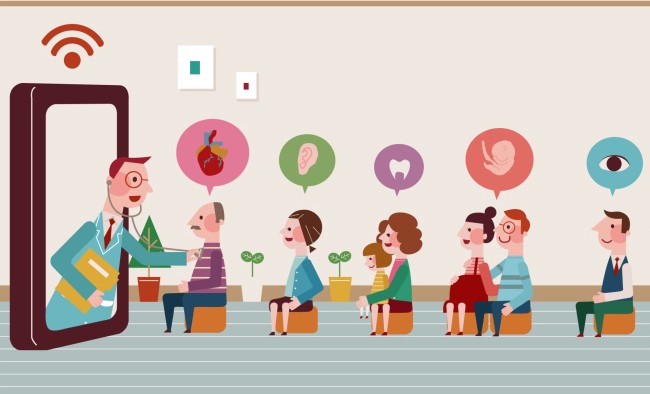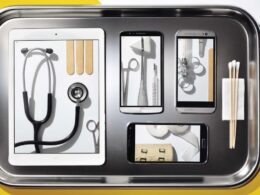Nasdaq.com
By Juan C. Jimenez,
Co-Founder and CEO of AccurKardia
In May of 2020, at the initial peak of the COVID-19 pandemic, it was estimated by McKinsey & Company that up to $250 billion of the U.S. healthcare spend could potentially be shifted to virtual care.
While some of the hype in the virtual care buzz has already slowed down, recent data from McKinsey & Company indicates the usage of telehealth services remains at 38 times the pre-pandemic baseline.
As the first wave of telehealth closes out with strong numbers, a second dose is building momentum now and it could serve as a ‘shot in the arm’ for telehealth.
If successful, this new era will bring care well beyond a video call, not just facilitating the patient-clinician connection virtually but enhancing the quality of care itself.
As the first wave of telehealth closes out with strong numbers, a second dose is building momentum now and it could serve as a ‘shot in the arm’ for telehealth.
If successful, this new era will bring care well beyond a video call, not just facilitating the patient-clinician connection virtually but enhancing the quality of care itself.
In particular, Telehealth 2.0 will be marked by new remote patient monitoring tools, giving providers a clear window into a patient’s life with real-time analytics and longitudinal data.
As innovative startups increasingly flock to the space, there will be more opportunities for investment.
The global telehealth industry is expected to reach $787.4 billion by 2028, clocking an illustrious CAGR of 36.5%.
In particular, Telehealth 2.0 will be marked by new remote patient monitoring tools, giving providers a clear window into a patient’s life with real-time analytics and longitudinal data.
The global telehealth industry is expected to reach $787.4 billion by 2028, clocking an illustrious CAGR of 36.5%.
The following developments will contribute to the industry’s growth and differentiate Telehealth 2.0 from previous iterations.
- Moving from convenience to medical excellence
- Data is the linchpin of telehealth transformation
- Integrating ‘wearables’ into telehealth
- Looking ahead: investing in Telehealth 2.0
Moving from convenience to medical excellence
Until now, the boom we’ve seen in virtual healthcare services can be categorized as Telehealth 1.0. In this mode, the focus has been on replicating traditional in-person care visits virtually. Namely, especially during the pandemic, clinicians have been interacting with their patients via a voice or video call.
While Telehealth 1.0 has propelled a great leap forward in the right direction, there is still a long way to go for patient adoption. In 2020, when demand for virtual care was at its highest, only 43% of consumers had adopted video-based telemedicine, according to data from the Stanford Center for Digital Health.
Not only has consumer adoption been sluggish but, by and large, the approach has been ‘cut and paste.’ When you think about it, in many cases, the traditional office experience has merely been transferred to a computer screen. While this has been helpful and fitting for the time, especially during the pandemic, the ‘talking head’ clinician and patient model won’t bring about meaningful innovation to telehealth in the long term.
To date, technology just has not been used to its fullest extent. This could perhaps partially be explained by the fact that much of these developments were born out of necessity, rather than out of desire for innovation. In Telehealth 2.0, we will now see the goal move from convenience to medical excellence.
Data is the linchpin of telehealth transformation
There can be no progress in telehealth unless clinicians are capable of capturing patients’ data remotely, allowing them to better assess conditions and offer superior care.
This will evolve the patient experience from a helpful phone or video conversation, to offering an informed assessment coming from a significant amount of data, curated and analyzed by automated software — and then manually reviewed by qualified healthcare professionals.
Sticking with the basics, valuable health data could include the vitals such as weight, height, body temperature, blood pressure, heart rate, oxygenation, glucose, etc.
Furthermore, with the help of technology, this could be expanded to include more advanced information such as electrocardiograms (ECGs), mobility levels, mindfulness and more.
By aggregating diversified datapoints, clinicians will gain a much better understanding of a patient’s condition and how they can help them.
This can even help clinicians get a better pulse on addressing complex conditions that currently rely on legacy tools in the office to detect and treat.
For example, according to the World Health Organization, cardiovascular disease is the leading cause of death globally.
In the United States, as per the Centers for Disease Control and Prevention, heart disease costs the United States about $363 billion annually. Early detection of related conditions, such as arrhythmias, is critical and could mean the difference between life and death for thousands of at-risk patients.
Telehealth can play a significant role in combating cardiovascular disease.
Clinical-grade Artificial intelligence (AI) integrated with consumer devices can provide real-time analytics to clinicians, enabling the early detection and diagnosis of arrhythmias.
As the prevalence of arrhythmia increases in proportion with a growing elderly population, implementing these tools via telehealth could help slow the progression of this chronic condition and significantly reduce the impact of cardiovascular disease overall.
… heart disease costs the United States about $363 billion annually.
Early detection of related conditions, such as arrhythmias, is critical and could mean the difference between life and death for thousands of at-risk patients.
Telehealth can play a significant role in combating cardiovascular disease.
Integrating ‘wearables’ into telehealth
Understanding the strengths and limitations of data is an imperative for improving patient outcomes in telehealth, while simultaneously minimizing risks.
Notably, clinicians can become more ‘data rich’ by looking beyond just clinical devices, and also utilizing the information coming from widely available ‘wearable’ consumer devices such as the Apple Watch, Samsung Watch, FitBit, etc.
As of today, most of the healthcare data stemming from such consumer wearables is being used for advertising purposes in the wellness industry.
However, significant progress is being made by manufacturers and the medical community to perform clinical research and validation through these devices.
A study conducted by the Stanford School of Medicine, in conjunction with the Apple Heart Study, gave the Apple Watch a 71% positive predictive value for indicating a positive tachogram reading. Of the 71% cases identified, 84% of them were found to have atrial fibrillation.
Not only is the device proving to be quite accurate, patient compliance is also strong: 57% of users who received irregular pulse notifications subsequently sought medical attention.
Owing to promising data on accuracy and patient behavior, the future looks bright for the wearable device market.
Estimated at US$18.1 billion in the year 2021, the wearables industry is projected to more than double in size by 2026 to reach US$38.9 billion.
While some clinicians in the medical community have cast doubt on these devices, their adoption is becoming too valuable to ignore.
It is likely that more clinicians, researchers and institutions will partner with startups to further develop the market by improving accuracy, expanding functionality, and exploring entirely new use cases.
As a result, wearables are positioned to play a leading role in enhancing patient experience and unlocking new levels of medical excellence.
Estimated at US$18.1 billion in the year 2021, the wearables industry is projected to more than double in size by 2026 to reach US$38.9 billion.
Looking ahead: investing in Telehealth 2.0
The healthtech industry enjoyed another banner year in 2021, bolstered once again by the ongoing shift to virtual care during the COVID-19 pandemic.
A total of $29.1 billion flowed into digital health startups across 729 investment deals, according to digital health venture fund Rock Health.
Overall, investments in 2021 nearly doubled 2020’s $14.9B former record haul across 484 deals.
The momentum in healthtech innovation shows no signs of slowing down any time soon, with market growth projected through 2022 and beyond.
A total of $29.1 billion flowed into digital health startups across 729 investment deals, according to digital health venture fund Rock Health. Overall, investments in 2021 nearly doubled 2020’s $14.9B former record haul across 484 deals.
In this fast-growth environment, more startups in AI, machine learning and data analytics will come to the table.
For investors, it’s important to consider how these developments will impact the trajectory of Telehealth 2.0, where the focus is on medical excellence rather than just convenience.
By reimagining where and how care should be delivered, the best investments will promote patient participation, integrate diversified data, improve workflows for clinicians and deliver superior patient experiences.
By reimagining where and how care should be delivered, the best investments will promote patient participation, integrate diversified data, improve workflows for clinicians and deliver superior patient experiences.
About the author
Juan is the Co-Founder and CEO of AccurKardia, a digital-first and software-only healthcare company focused on ECG analytics enabling a world in which a combination of smart devices, reliable and actionable data, and efficient clinical intervention can together improve medical outcomes and save lives. Prior to AccurKardia, Juan was President of one of the largest non-emergency medical transportation companies in the USA based in Puerto Rico. Juan started his career as an investment banking analyst and associate at Credit Suisse in New York. He has an MBA from Columbia Business School and BBA from the University of Puerto Rico.
The views and opinions expressed herein are the views and opinions of the author and do not necessarily reflect those of Nasdaq, Inc.
Originally published at https://www.nasdaq.com on April 27, 2022.












